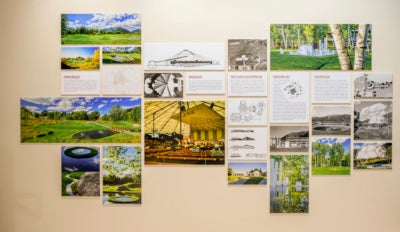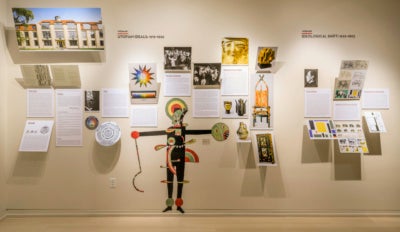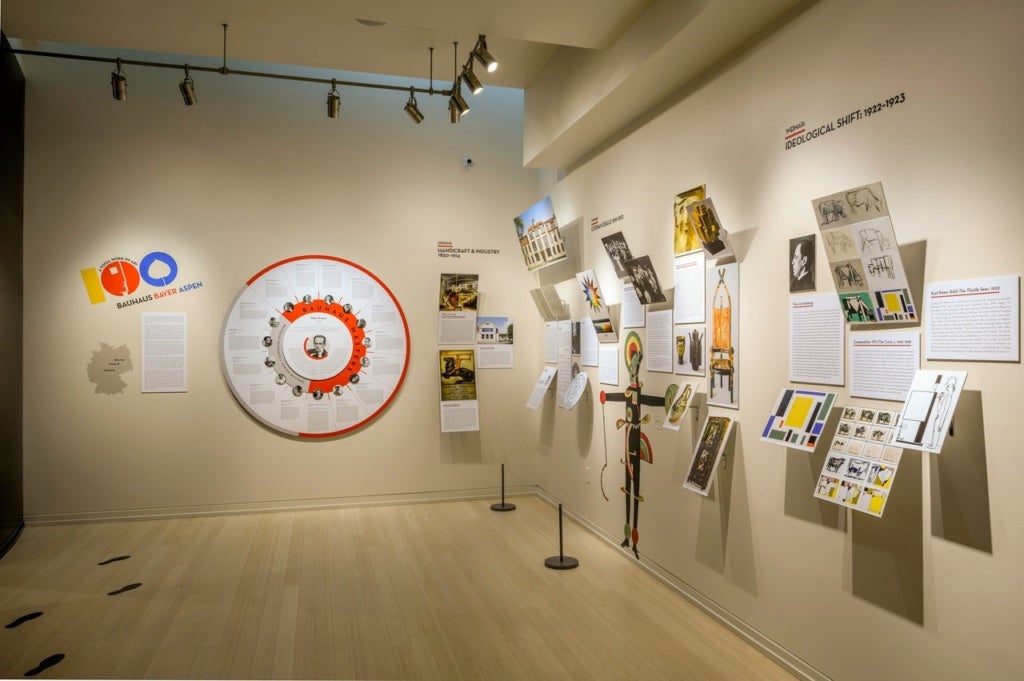
Ongoing Exhibition, launched June 2019
The Staatliches Bauhaus Weimar, known today simply as “The Bauhaus,” was among the most progressive art schools in Europe in the first half of the 20th century. While it existed for only a brief period of time, from 1919 to 1933, its influence on international art, architecture, and design, as well as on educational theory and practice, is unparalleled. Its founder, Walter Gropius, the guiding spirit behind its innovative philosophy, led the school for nine years, from 1919 to 1928. He was followed by Hannes Meyer (1928-30) and finally Ludwig Mies van der Rohe (1930-1933). In its fourteen-year existence, the Bauhaus attracted some of the most experimental and well-respected artists to its three locations (Weimar, Dessau, and Berlin), including Wasily Kandinsky, Paul Klee, and László Moholy-Nagy. In the 1930s, as the Nazis assumed power in Germany, pressure was exerted on the school to embrace a National Socialist ideology. Not wishing to give in to these forces, but with considerable uncertainty regarding the future, the Bauhaus was officially dissolved on July 20, 1933. Ironically, this closure, along with the increasingly dire personal and political situation in Germany, helped secure the school’s legacy by forcing teachers and students to emigrate to other parts of the world, particularly to the United States, where they extended the Bauhaus philosophy and pedagogical methods to a new global audience.


A key figure in the history of the school was Herbert Bayer (1900-1985). Bayer was a self-taught painter who, after briefly serving in World War I, apprenticed in the offices of architects and designers in Linz and Darmstadt. Drawn to the Bauhaus as a student in 1921, Bayer completed his studies in Weimar and graduated in April 1925. With the school’s move to Dessau later that year, Bayer was elevated to the role of junior master in charge of typography and advertising. He remained there until 1928 and made many significant contributions. Among them was his Bauhaus type design widely used on the school’s letterhead and publications, as well as the upper-case name applied to the side of its building. He left Dessau to pursue an independent advertising business in Berlin. Escaping Nazi Germany in 1938, he moved to the New York where he established a career as a successful designer in a variety of disciplines. A fortuitous meeting with Walter Paepcke, head of the Chicago-based Container Corporation of America, led to Bayer’s moving to Aspen in 1946. In the nearly thirty years that Bayer lived and worked in Aspen, he helped transform the once neglected silver mining town into a world-renowned destination. Among his greatest legacies is the campus of the Aspen Institute, a true manifestation of the Bauhaus mission set forth by Gropius in 1919: uniting all artistic disciplines to create a total work of art.

Bernard Jazzar’s lecture A Total Work of Art: Bauhaus-Bayer-Aspen on July 12, 2019 was presented in conjunction with the exhibition of the same name in the Resnick Gallery of the Doerr-Hosier Building on the campus of the Aspen Institute. Following the sequence of the exhibition, Jazzar presented a brief overview of the Bauhaus, highlighting Herbert Bayer’s contribution as a student and later as a teacher from 1921-1928. The presentation also explored the school’s impact on Bayer’s development as a “total artist” working in multiple fields, including painting, sculpture, photography, typography, graphic design, advertising, and exhibition design. These skills were enlisted in the design of the Aspen Institute’s campus, a project that began in the early 1950s and concluded in the mid-1970s when Bayer, due to health issues, was forced to move from Aspen to Montecito, CA.
This exhibit is free and open to the public. Gallery hours are 9:00am-5:00pm Monday through Friday, but can vary due to special events. For more information call 970.925.7010.
Photos by Dan Bayer.

